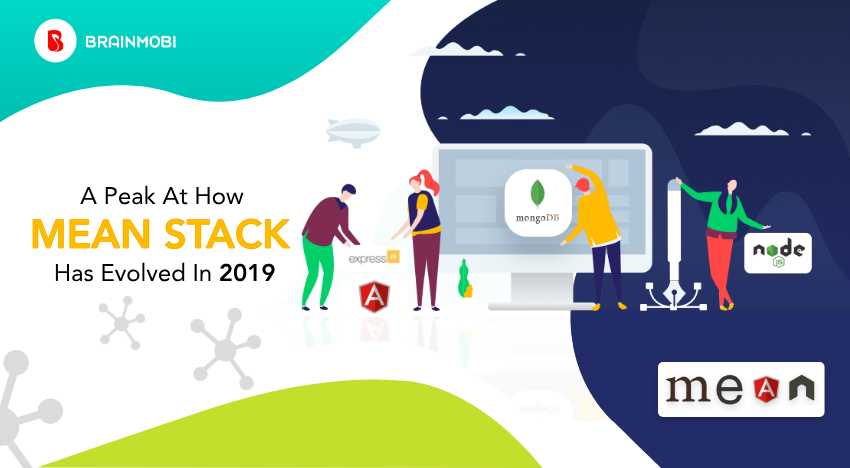
Almost 98% of Fortune 500 companies comprise of 96% companies which revolve around IoT, Big Data and Machine Learning. It is almost impossible to go forward with these applications without incorporating MEAN stack within their technology stack. It is evident that this ecosystem will see a rapid rise considering the business requirements these segments entail. The benchmark of standards are constantly increasing and MEAN stack too has not failed to evolve and improve its functionalities with respect to the demands of the market.
With its application witnessed in UBER, Node has become faster than before when it comes to processing asynchronous requests and can handle handle big data-sets comparatively better than any other platform. Above which the node.js environment that comes to the advantage of any top node.js development company shall benefit a new quality thanks to the merger or the Node.js Foundation and JS Foundation. Receiving applications from reputed organizations such as NASA, PayPal, Medium, Uber, Netflix, Ebay, LinkedIn, and Walmart, MEAN Stack and in particular Node.js has become resilient when it comes to integrating ton of functionalities and incorporating changes with the need of the hour.
With such a hot bundle of new additions within the Node.js community in 2019 let us take a look at a few exciting things that could come to your applications advantage:
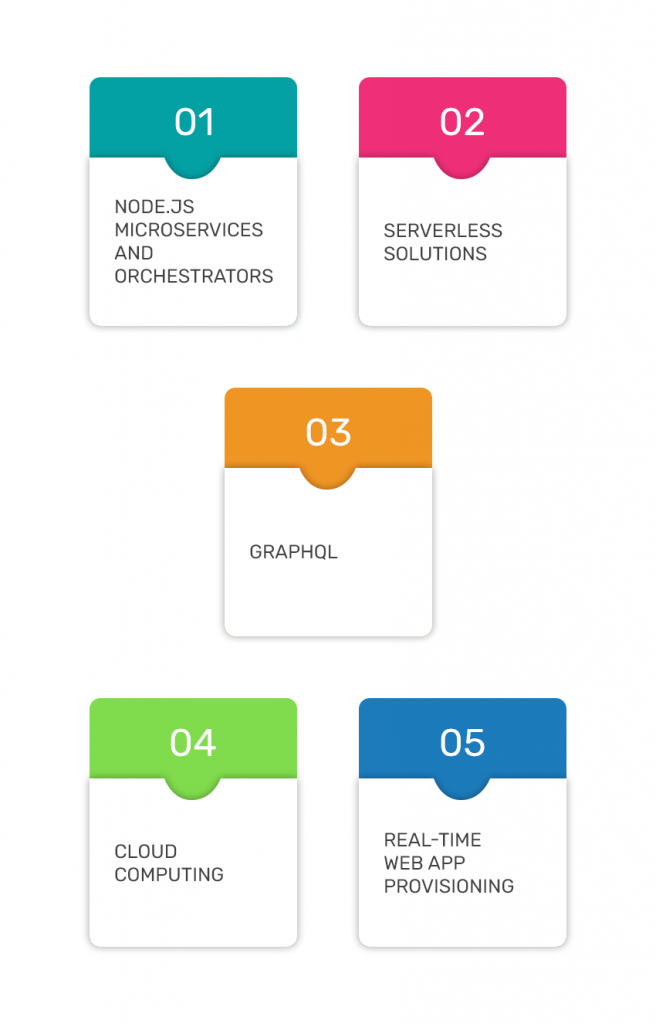
1. Node.js Microservices and orchestrators
Microservices constitute the other alternative to the serverless movement keeping in mind the services they provide which can be categorized under the same belt as serverless solutions.
This is very implementable especially in the case of large scale products in which Microservices are written in Node.js proven solutions that want to improve maintainability and eliminate any debt of technical debt that could arise in their stack.
Besides these microservices pattern also allow for:
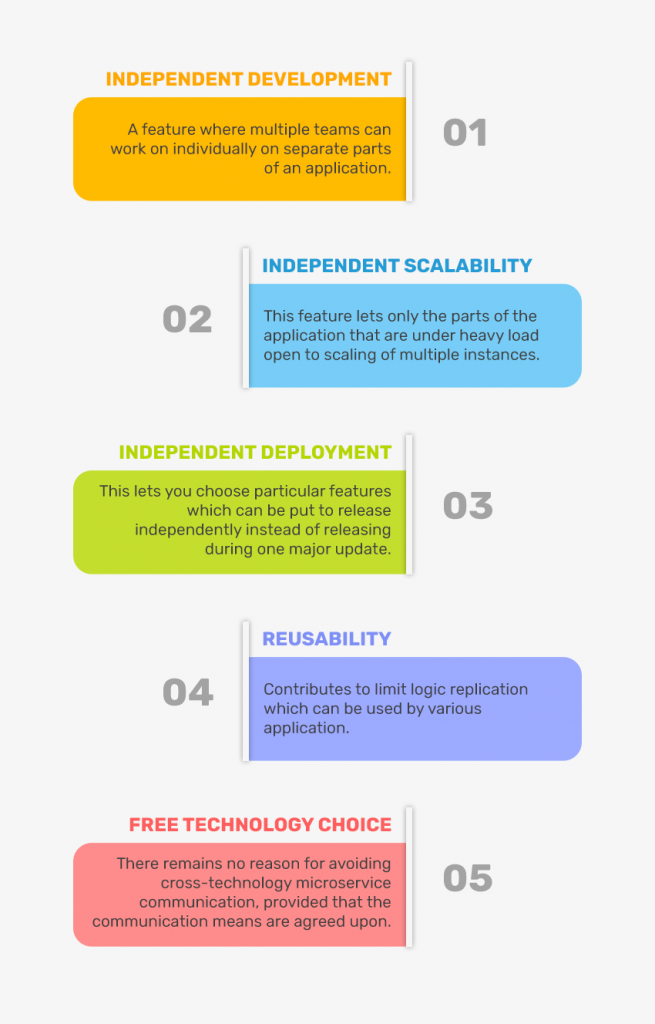
Proper implementation for this feature requires an “orchestrator”. Kubernetes is one of them which helps ensure the microservices you build in Node.js shall run smoothly and scale properly. Kubernetes can also be implemented when it comes to monitoring Node.js microservices and ensures their continuous availability. This in turn prevents the risk of drawbacks microservices can generally result in, for example complicated deployment processes, putting monitoring in place, auto-placements, auto-restarts, auto-replications, and auto-healings.
One of the most notable examples of this feature is mostly Netflix and they use ~1000 different ones to serve ~15% of their global downstream volume. The subtitles that come with the service is entirely independent of the video streaming one, which implies that if it breaks for some reason, the core Netflix service provider shall still be functional. This makes the part of graceful degradation easier and helps hide subtle errors from the sight of the end user. Uber, WeChat, Spotify, Walmart are some great mentions of the service.
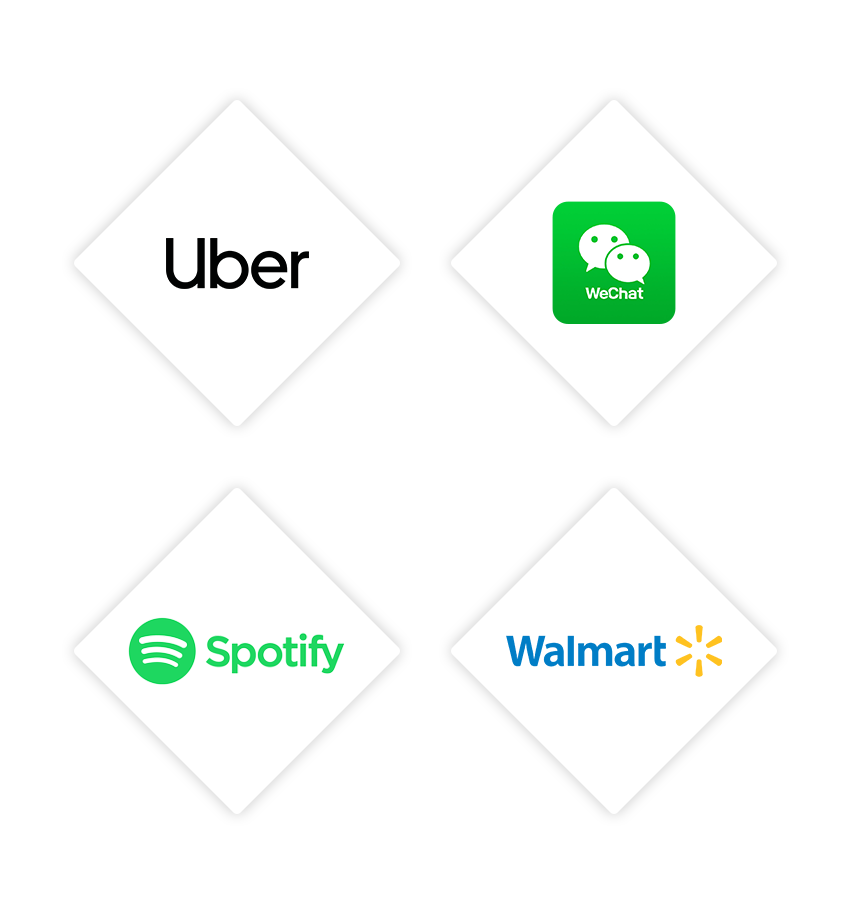
2. Serverless solutions
Serverless is a system in which eliminates any concern with respect to the maintenance of the servers your applications could be running on. This helps orient the focus of the team to software only, eliminating any hardware related issues and malfunctions. This could be outsourced to third party providers which helps guarantees service uptime. Going forward with serverless solutions allows quick and comparatively cheap idea validation, which comes highly valuable in highly competitive sectors and for companies which have adopted the agile mentality or failing fast, but winning big.
Here are a few ways in which choosing a serverless approach/solution could benefit your business:
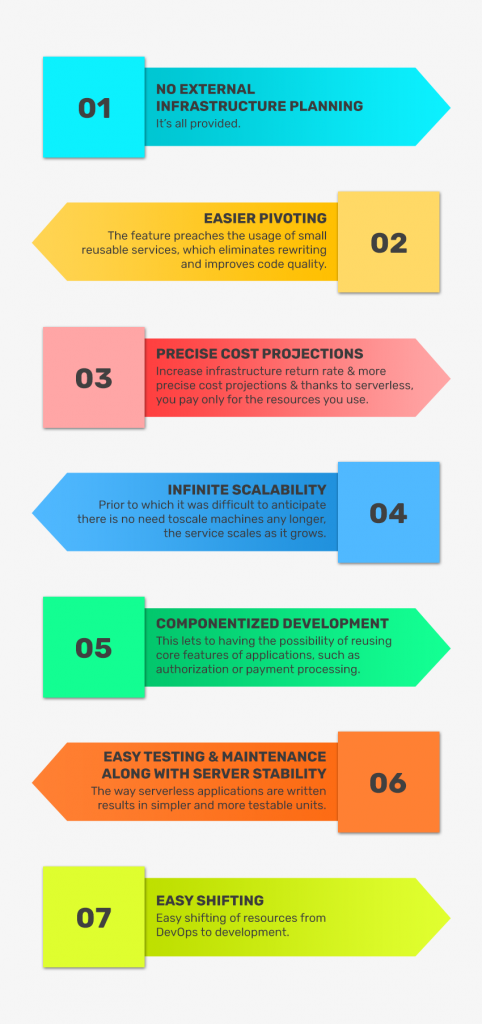
Coca-cola is a great example with it comes to going Serverless with an IoT. It helped them gathering reports on sales from vending machines across the globe instantaneously, which eliminated the need to keep the servers running at all times. This helped them cut down operational cost from 13000$ down to 4500$ a year on a simple service which was a staggering 65% savings most of which covers just the direct architecture fees for Amazon EC2 instances.
3. GraphQL
GraphQL was battle tested by Facebook and Shopify following which is started getting more traction in 2019.
Once again it is independent of any particular technology solution, yet many of its features are parallel with the current developments of JavaScript in general and particularly with node.js.
Using GraphQL within your application makes way for the use of multiple data sources (for example third party REST APIs) in an efficient manner. It simplifies the workflow on multiple platforms along with development of new features which can provide sample placeholder structures while the other features are still being developed.
GraphQL helps reducing data overfetch which inclines the consumers of your product to get exactly what they need. This holds weight considering the fact that almost ~50% of all web traffic comes from mobile devices. This in turn adds additional layers of security for your application and lowers the risk of protected data exposure in terms of the GDPR security compliance.
GraphQL is technology agnostic which ensures an easy switch from a legacy technology to a modern one, as it does not require the underlying dependencies to be written in one stack. Let’s say you want to move away from your legacy code. This eliminates the need to rewrite your whole code from scratch, but simply allows to reuse the existing services you are happy with and execute them using some other technology which GraphQL might find compatibility with.
In some ways it can be used as an alternative to the database model modification – it allows operations on abstract structures stitched together using the GraphQL engine, making the expansion of models more easily compared to previously set in stone till you carry the next set of data migration.
Kiwi.com makes use of multiple data sources to provide us with the most cost-effective travel options. This is achieved thanks to the implementing abilities of GraphQL to fetch the data from multiple other search engines, such as SkyScanner and InterRail. Following which Kiwi presents to its users with a clear and coherent presentation layer thanks to the uniform data model that can be enabled using GraphQL.
4. Cloud computing
Some of the factors presented above above already fall into this category, but there is plenty more than what exists in the term. Node.js can help you either build an entirely new product or use the existing ones to enhance your application. Cloud computing paves way for some of the most varied service models like Platform as a Service (AWS), Software as a Service (Prisma, Google Apps) , Function as a Service (Netlify authentication), Content as a Service (Contentful, Prismic) or also Infrastructure as a Service (Amazon EC2).
Many cloud computing solutions automatically benefit from all that serverless features brings to the table:
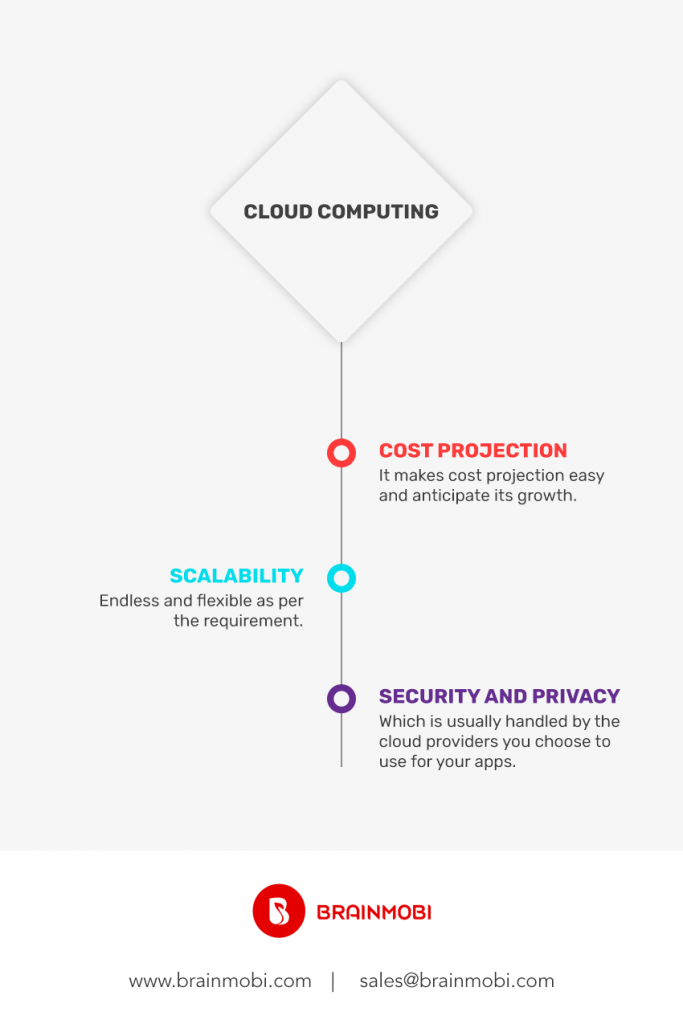
Technology sharks are focussed towards open-sourcing some of their cloud architecture solutions – out of which one of the most recent Node.js related releases comprises as cloudnativejs.io by IBM. Already available cloud solutions offered by the tech giants, such as speech-to-text or IBM Watson are also a great case study.
5. Real-time web app provisioning
Node.js is the perfect solution for any real-time web project as it has the ability to perform especially well under heavy load. Almost any applications require real-time communication, be it from chat bots, instant communication apps, tele-conferencing software, or bot assistants which rely on cloud-based features, all the way to data stream processing, all of which produce the most effective solutions using Node.js. The preexisting not-so-obvious solutions are likely to to replace mundane procedures or act as reminders – applications are now using inhouse-built bots to remind us of calendar events, hanging code reviews, and to elicit feedback.
Real-time app are a part of our daily needs and we use it frequently without even realizing it. Be it the form of a food delivery app displaying the location of our coveted meal (Uber Eats), Google Docs and tools for online collaboration, all the way to online stock tickers and cryptocurrency price trackers. This also includes the numerous messenger apps and video communication tools, like Skype or Google Hangouts, that let us keep in touch wherever we are. A notable example here is Figma – an online design collaboration tool that manages to compete goals within a short duration seamlessly.
All of the above require a great deal of backend processing and Node.js used in bundle with MEAN stack is a great solution for both of those needs combined with its outstanding support for the WebSockets protocol.Our long list of endeavours and experiences with regard to MEAN stack enable us to implement the above list of features for any application thus helping it take it to the next level of terms of service and delivery.
As one of the top mean stack development company, we at BrainMobi have made extensive research of all the best cases related to the platform and wish to deliver the best standards of development to our clients. So if you have the idea for a mobile or web application, feel free to write to us at sales@brainmobi.com .





